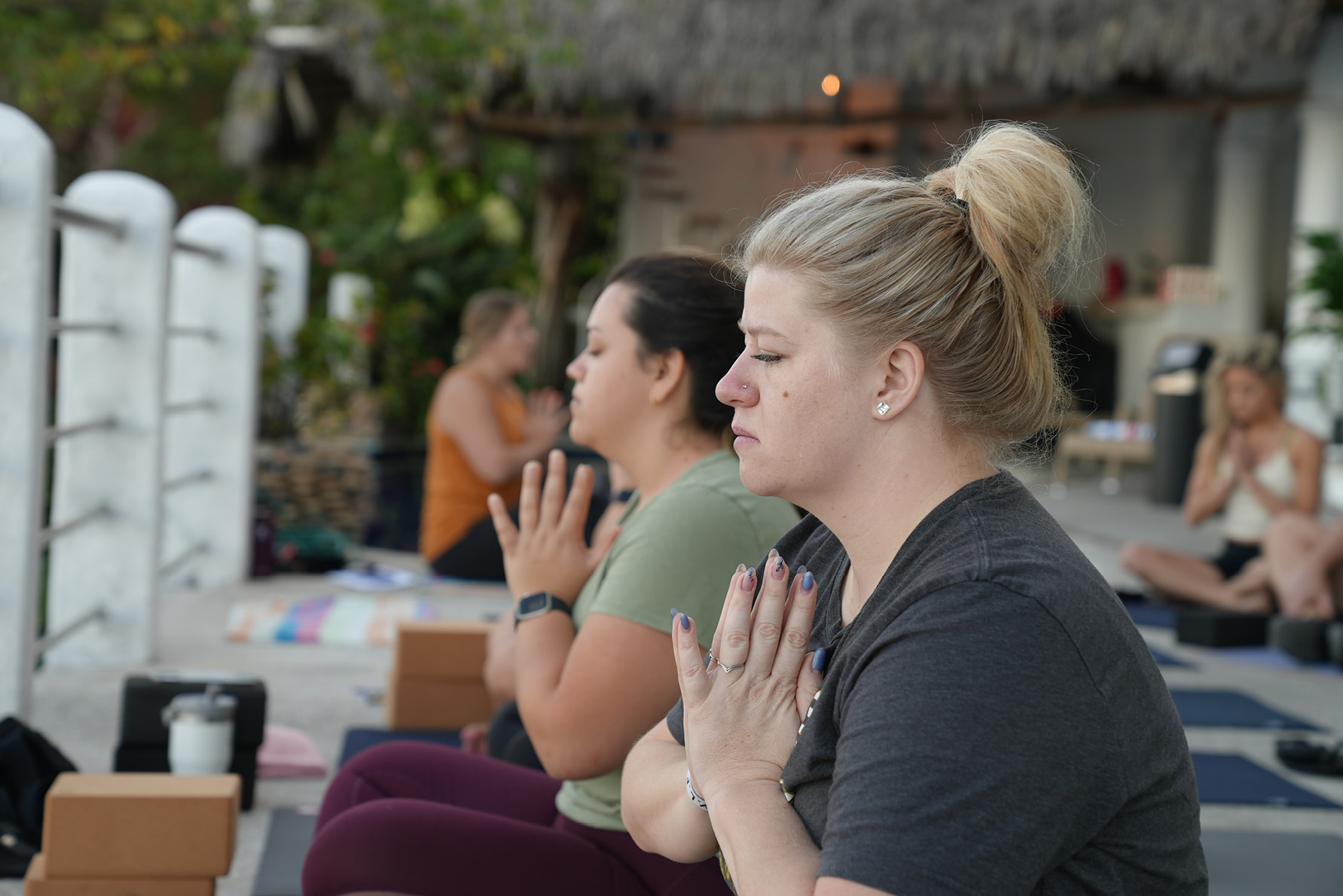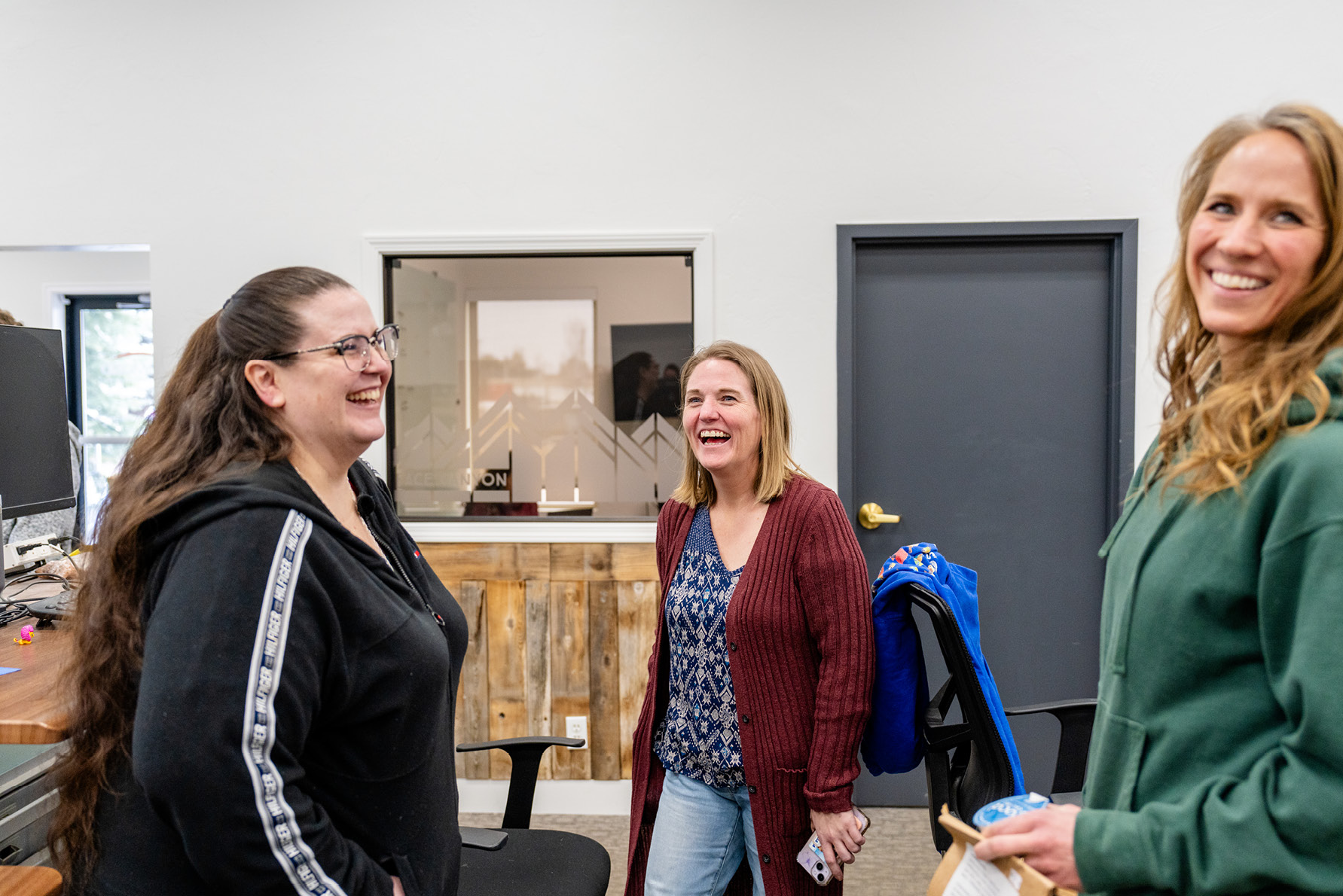Article at a glance:
- In order to grow, we have to lean in.
- When our ego feels challenged, leaning in is the last thing we feel like doing.
- Leaning in looks different for everyone, because every journey is different.
- Reach out for support when leaning in gets really uncomfortable.
Time to read - 3.5 minutes
At Redmond, when we say “leaning in” we mean we want you to GROW. It means living by our core values of passion for contribution, occhiolism, ubuntu, reflection, and renewal, because elevating the human experience is a natural result of living those values.
But leaning in isn’t always easy. Growth lies at the edge of your comfort zone, and stepping outside those boundaries can be…well, uncomfortable.
Brené Brown shares a story in her book Rising Strong about a moment where she felt vulnerable and defensive, but chose to get uncomfortable and lean in instead of following her knee-jerk reaction.
[embed video]
For many of us, leaning in means pausing before we act on an impulse, and asking ourselves how to move forward in a way that’s aligned with our values.
It can also mean assuming positive intent, having hard conversations, and getting vulnerable when we’d much rather put on the armor of defensiveness, or just shut down.
When leaning in, you might run into concepts or interactions that challenge you and push your buttons.
Growth requires leaning into that discomfort and learning from it instead of shutting down.
Embrace the Discomfort

Discomfort often signals an opportunity to lean in. That doesn’t mean discomfort is inherently good or that every uncomfortable situation is a good thing, but it often indicates that there’s something to learn here.
Leaning in might look like noticing when we’re feeling defensive and pausing instead of lashing out, like in Brené’s story.
It might be noticing when we’re stuck in a story and stepping back to look at what’s actually happening. (As Brené learned, maybe our spouse doesn’t think we’re unattractive and is bothered by something unrelated to us.)
It could be assuming positive intent.
It could be speaking up and having hard conversations instead of sweeping concerns under the rug. (Or letting it go instead of making mountains out of molehills.)
It could be admitting that we’re wrong and committing to learning more.
It might be connecting to a higher cause instead of wanting to be the star.
It could be giving yourself and others the space to be imperfect in this journey, because we are all in this journey together, reaching for this vision.
These are all uncomfortable, but they lead to so much growth.
Leaning in is about the desire to grow. It’s not about ego. The tricky part is, our egos like to be in charge—especially when we’re feeling unsure of ourselves—so when we try to quiet them and act differently, they like to throw tantrums. That part of us hates to be wrong, feel vulnerable, or try something new.
Living by our core values requires leaning in, because these things don’t always come naturally in our society that focuses on individualism, being right, fighting for what we believe (i.e. doubling down instead of having productive conversations), competition, external markers of success, getting buy in, etc.
What can you do when leaning in gets uncomfortable?

There are a few things you can do to make stretching outside your comfort zone a little bit easier.
The first step is to know that you’re not alone in this journey. We’re all leaning into discomfort around here, so it’s okay to talk about it.
Your team lead is always a good person to talk to if you’re confused or concerned about something. You can also talk to a culture team member.
Your coworkers may also have good insights, especially if they’ve been with Redmond for a while. Chances are, they’ve experienced exactly what you’re going through!
Leaning in might require some hard conversations, but with Ubuntu, and Occhiolism, those conversations can be productive. Have those important conversations directly with the person involved, and reach out to their team lead and culture lead if you aren’t sure how to move forward.
We also find that in an uncomfortable moment, deep, slow breaths can really help.
No person or company is perfect. We’re always striving to be better, and we know there’s plenty of room for improvement. We’re in this together, so as a practice, we try to assume positive intent and give each other space to be imperfect while also helping each other become better.

This can feel like a lot. But know that if you’re getting uncomfortable sometimes and feel like you’re growing, getting better at your role, and developing as a person, you’re probably leaning in!
Remember, this is a process.
There are countless ways to lean in.
Basically, leaning in means you’re trying to continuously improve yourself, whatever that might look like for you. Lean into the best version of YOU. Don’t be someone else.
While you can’t control whether others learn in, you can always ask yourself how you’re leaning in! When we all lean in, we grow together. That’s how we elevate the human experience for our customers and for each other.



